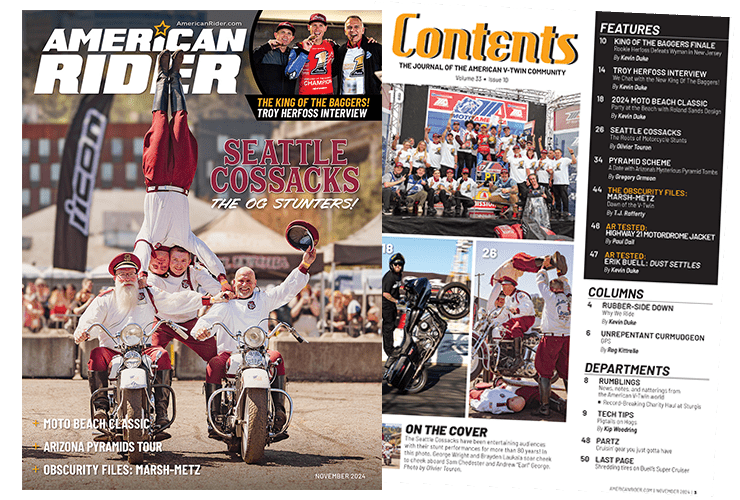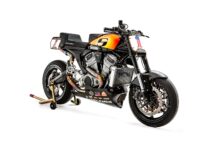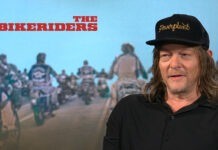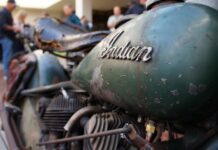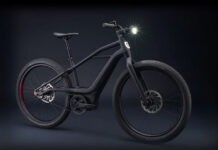The shank of summer is upon us. The riding season is in full flower, the midyear models from Milwaukee have been rolled out and reviewed and now it’s just a waiting game for the appearance of the 2015 model lineup, which is still a good month and a half away, to judge by the release schedule of the past couple of model years.
That leaves a lot of downtime for the motojournalist’s idle mind to mull what’s been unveiled to date and what’s in the offing for the future; it’s a time for review, prognostication, and for concocting wild-eyed conspiracy theories (my personal specialty). And as I turned my idle mind to the midyear mounts, something strikingly peculiar presented itself. To understand what it was that got my attention you have to go back in time to the year 1977 when the disco craze was sweeping the nation with the release of Saturday Night Fever and the chart domination of the brothers Gibb. Like most discriminating listeners, I found that development revolting, but over at The Motor Company, a craze of another—and much more appealing—variety was underway, as AMF/Harley-Davidson was suddenly feeling adventurous and in the mood to futz with the basic Milwaukee formula, and as a result introduced a trio of unique new models to the market.
Most audacious of the three was the XLCR Sportster, which with its black-on-black outfitting, café fairing, sleek profile, Morris mags and stunning chrome Bar & Shield tank escutcheon, made it an instant style icon, and inarguably the sexiest bike ever to emerge from mind of Willie G. Davidson. Or anyone else, for that matter.
Only problem was, hardly anybody wanted one; it was just too far ahead of its time and outside the comfort zone of the hidebound H-D traditionalists who back then comprised virtually their entire customer base. Just over 3,000 units were produced over its two-year stint in the lineup.
Also introduced that year was the Sportster XLT Tour model, a dedicated Sportster tourer with hard bags and a windscreen, among a number of other mileage-friendly accouterments. It was, like the XLCR, ahead of its time, but for different reasons: Bikers who wanted baggers wanted to go big, and as yet no woman rider segment of the market—the natural consumer for that style of mount, you’d imagine—had materialized. The XLT was even a bigger flop than the XLCR, with a total production run over two years of just more than 1,000 units.
And then there was the FXS Low Rider. Its fate could not have proven more dramatically different than that of the other two machines, as it literally exploded onto the stage quickly becoming a celebrity (selling over 13,000 units in its first two years on the market), and one whose popularity didn’t wane for the 32 years it originally remained on the roster.
Flash-forward 37 years—or make that 37-1/2—and a full-blown disco revival is underway, led by the chart-topping likes of Daft Punk, Robin Thicke and Pharrell Williams (and it’s just as revolting as it was the first go-round). And The Motor Company has just completed the rollout of their three new midyear models (four, if you count the Street XG500 and XG750 as distinct offerings, which is a stretch).
The similarities between these latest 2014 offerings and the slate of newbies back in 1977 are downright eerie—superficially, at least.
Take the much-ballyhooed world-stage-ready XG Street models. The MOCO unabashedly refers to the ’77 XLCR as the “ancestor” of the new Street models, and for obvious reasons. With their black-on-black cosmetics, including the black exhaust (which was unique to the XLCR—until now), the seven-spoke Morris wheels, café fairing and gleaming chrome Bar & Shield tank escutcheon, there’s no mistaking the platform’s DNA. This time around, though, the consumer demographics have changed and broadened dramatically and the bikes’ reception both here and abroad looks brightly promising.
The XLT Tour was referred to when it first appeared as the “baby bagger,” but that tag has since been broadly applied to the Dyna Switchback (that, and the Road Queen), so the new Sportster may have to make do with being dubbed the “baby Switchback.” And in the same way the Street models are downsized, defanged echoes of the brutish XLCR, the new XLT Tour is a mannerly revisiting of the original XLT, being built on the foundation of the XL1200 Superlow with its inseam and gender-ergo friendliness and curtailed cornering prowess.
The last specimens of the original Low Rider dynasty appeared in 2009 and were actually referred to by the factory as the “Low Low Rider,” and at that point in H-D’s market development was the spearhead of their foray into the vast pool of underserved women riders. And then the model disappeared, and that was puzzling. Why would Milwaukee walk away from the coolest bike model name ever? (With the possible exception of the Vincent Black Prince.) We naturally suspected at the time that the absence of the model would be short-lived, and that it would reappear for its 35th anniversary in 2012, and be the bearer of a broad Dyna chassis rethinking. Didn’t happen. Still, it remained natural to expect any return of the Low Rider to be splashy; a cause for celebration. Didn’t happen. Perhaps that’s the real shocker in all of this.
Aside from the inevitable technical upgrades that the last 37 years has brought across the H-D spectrum, the connection to the AMF era is hard to avoid. It’s hard not to see the recent releases as a cryptic homage to the summer of ’77.
That said, I’m still not sure how the disco revival angle syncs with this whole AMF revival coincidence. The lines are blurred. But I fully intend to keep digging. It’s that time of summer.
It’s all right here in the diaries…

